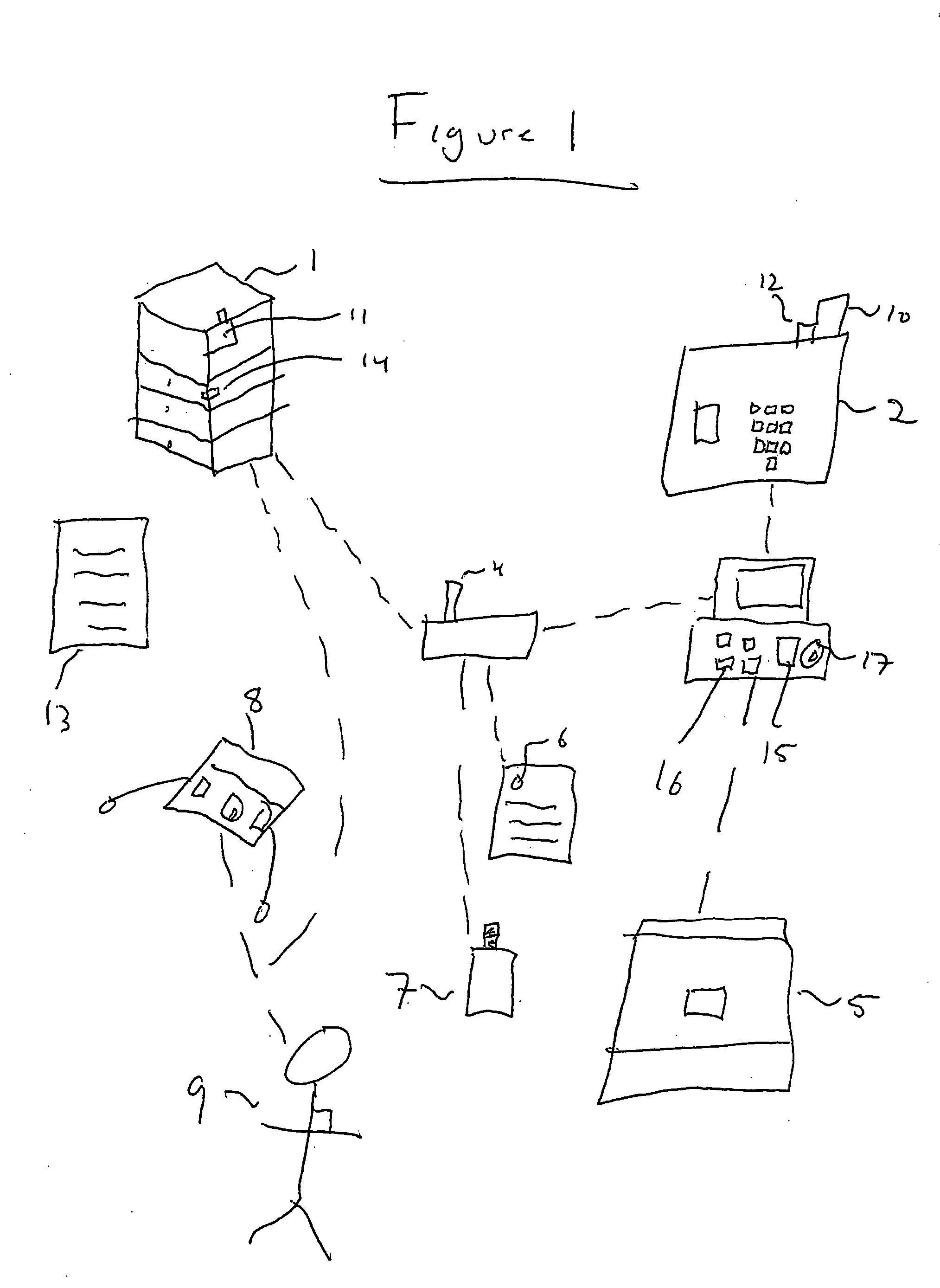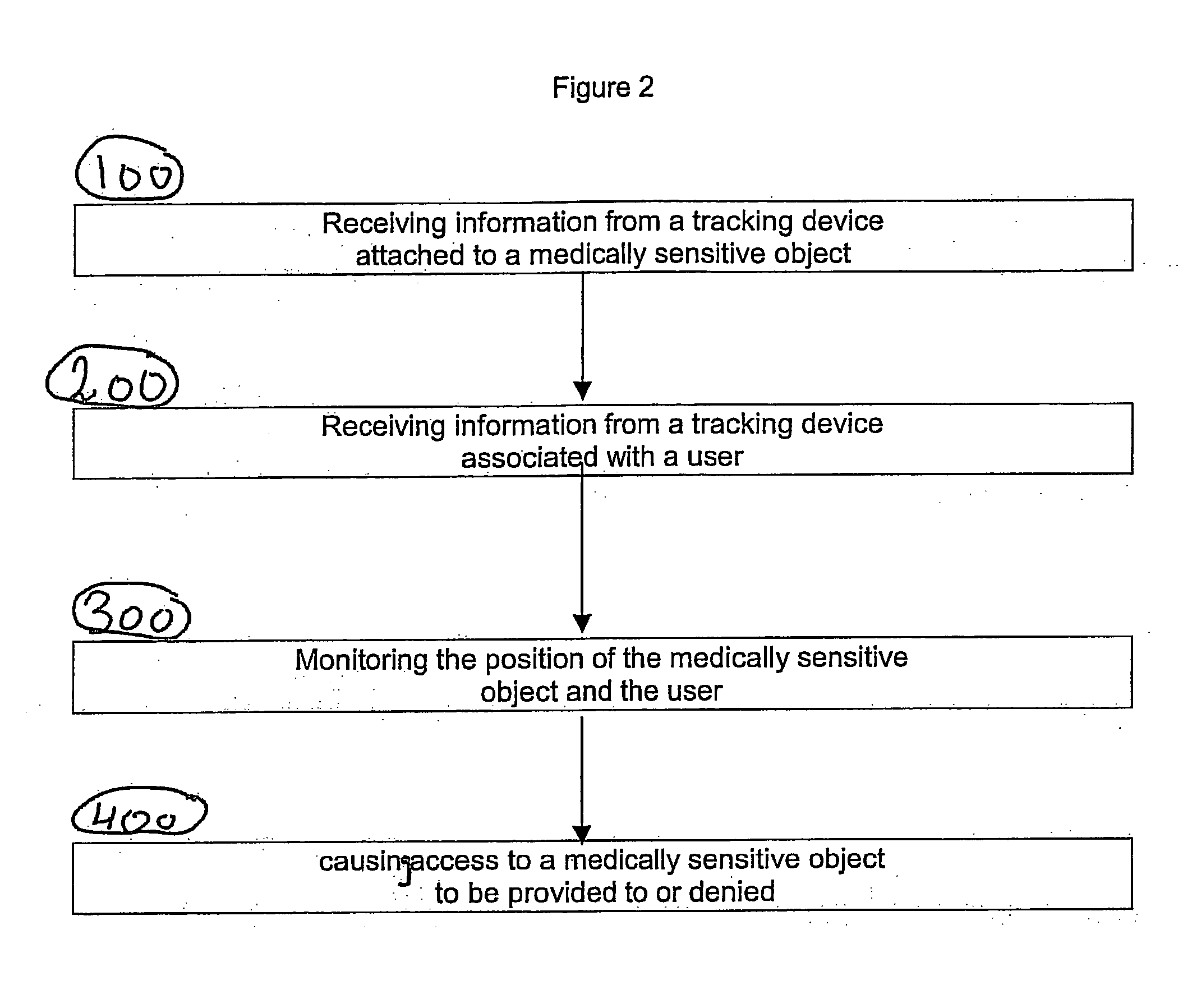Secure, networked and wireless access, storage and retrival system and method utilizing tags and modular nodes
a networked and wireless access and storage and retrival technology, applied in the field of electronic security access to nonelectronically and nondigitally stored information and databases, can solve the problems of healthcare service providers' record-keeping requirements raising a myriad, hipaa laws and regulations posing major risks to organizations maintaining physical and virtual (computer-stored) medical records, and the estimated cost of medical records exceeds $40bn, so as to achieve quick and seamless file processing
- Summary
- Abstract
- Description
- Claims
- Application Information
AI Technical Summary
Benefits of technology
Problems solved by technology
Method used
Image
Examples
Embodiment Construction
[0026] In the following Detailed Description of Exemplary Embodiments of the Invention, for purposes of explanation and not limitation, specific details are set forth in order to provide an understanding of an embodiment of the present invention. Preferred embodiments of the present invention are best understood by referring to FIG. 1. However, it will be apparent to those of ordinary skill in the art that the present invention can be practiced in other embodiments that depart from these specific details. In other instances, detailed descriptions of well-known methods, devices, logical code (e.g., hardware, software), etc are omitted so as not obscure description of the embodiment of the present invention with unnecessary detail. In particular, even though examples discussed in the following Detailed Description are largely in the context of medical records, embodiments of the present invention can be practiced in a wide variety of contexts, including, but not limited to, legal, ind...
PUM
 Login to View More
Login to View More Abstract
Description
Claims
Application Information
 Login to View More
Login to View More - R&D
- Intellectual Property
- Life Sciences
- Materials
- Tech Scout
- Unparalleled Data Quality
- Higher Quality Content
- 60% Fewer Hallucinations
Browse by: Latest US Patents, China's latest patents, Technical Efficacy Thesaurus, Application Domain, Technology Topic, Popular Technical Reports.
© 2025 PatSnap. All rights reserved.Legal|Privacy policy|Modern Slavery Act Transparency Statement|Sitemap|About US| Contact US: help@patsnap.com



